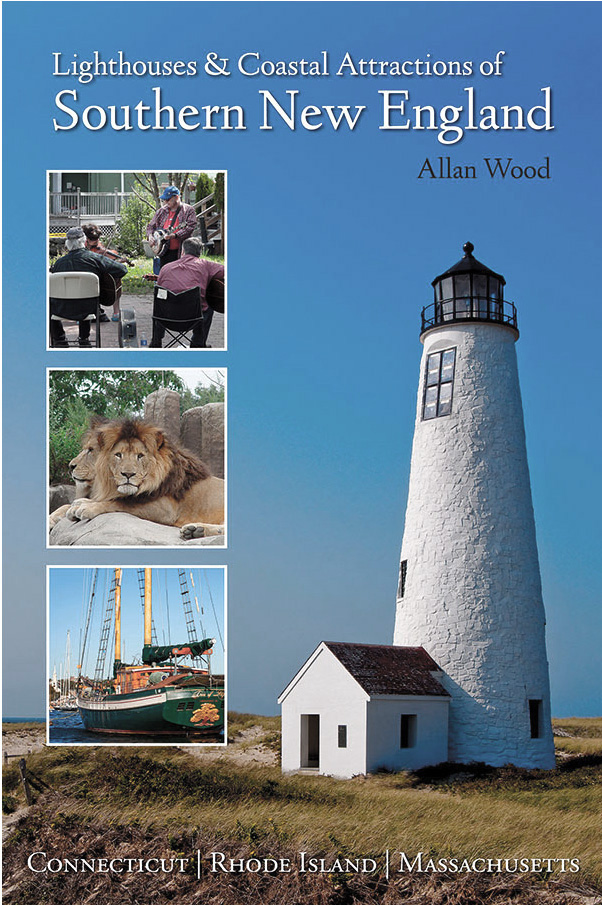Stage Harbor
(Hardings Beach) Lighthouse
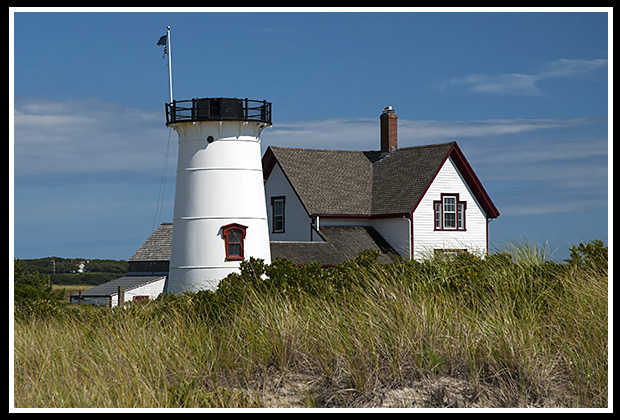
Chatham, Massachusetts
Built in 1880
Location:
Stage Harbor Light marks the entrance to Stage Harbor and can be viewed from a mile-long walk over Harding's Beach. The lighthouse is a private residence and is not open to the public.
Latitude: 41° 39' 31" N
Longitude: 69° 59' 01" W
Historic Stories:
Stage Harbor Light, also referred locally as Harding’s Beach Light, is the most recently built of the Cape Cod Light Stations.
The light was installed in 1880 to compliment with Chatham Light. |
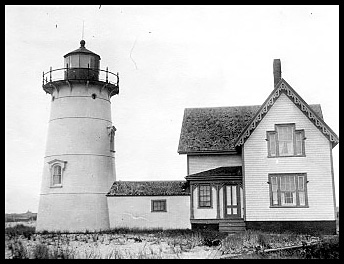 |
It helped guide the increasing fishing traffic into Old Stage Harbor during bad weather, especially in thick fog, which occurred quite often in the area.
The first Keeper, Enoch Eldridge, was appointed on June 29, 1880 and stayed until his death in 1884. Some of Stage Harbor’s keepers received commendations for aiding mariners in the harbor.
Keeper Alfred Howard received various commendations for aiding mariners, including aiding a fellow employee, from nearby Monomoy Point Light Saving Station, Walter Harding, when his dory capsized in March of 1913. He also received a commendation from the Secretary of Commerce for successfully coming to the rescue of a horse that had got caught in the marsh and would have perished if not for Howard’s quick thinking and tenacity. Howard would not receive any money for his deed but his kindness was not forgotten.
Mills Gunderson followed Keeper Howard, received commendations for cleanliness of the station, but in June of 1918, hung himself in a nearby shed, although the reason for this incident could never be explained.
Stanley M. Gunderson, Mills’ son, who had been assistant keeper, replaced his father. He was credited with several rescues near the station, including the passengers of the yacht Golliway in 1929, where the Lighthouse Commissioner praised him for his "timely assistance." Many years later it was discovered that Keeper Stanley Mills, during the Prohibition Era, he made extra income for himself by storing and bootlegging liquor, which he kept under the floorboards in the walkway that connected the lighthouse tower with the keeper’s house. One day, a Lighthouse Inspector arrived for a surprise inspection. He noticed some loose floorboards, but didn’t investigate any further and simply told Keeper Mills to repair them immediately.
In 1933, to save money, the government removed the lantern and capped the tower, then installed a skeleton tower nearby. When the property was purchased by the Hoyt family, they learned afterwards that the land had been part of a large parcel granted by local Native Americans to an ancestor William Nickerson, who also is known as one of the early founders of Chatham. The lighthouse is still owned by members of the Hoyt family. The property and buildings are still without plumbing, except for a single pump, and has no electricity.
Places to Visit Nearby:
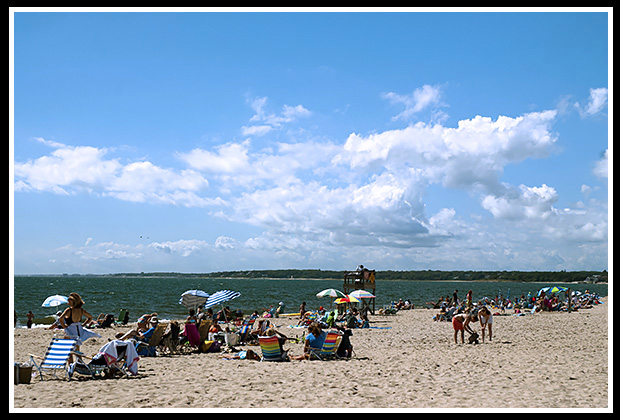 |
Harding’s Beach is a public quiet beach over a mile long that provides lots of space among dunes for quiet solitary relaxation. |
Visitors will find plenty of beaches in this region to suit everyone's needs.
| You can hike to the lighthouse along marked sand trails for about a mile, or take the beach route. | 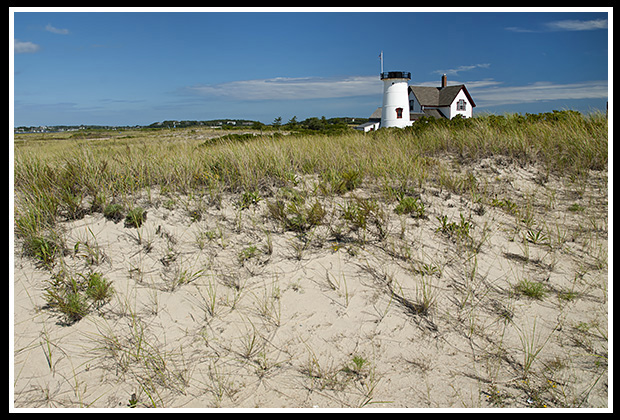 |
The lighthouse is private property, but nice views and photographs can be taken from the beach, or near the front gate to the house. There is a fee to park but the views and cleanliness of the beach are worth it.
The town of Chatham offers visitors a chance to enjoy many well-preserved 18th century historic homes and buildings, and museums. Chatham's Atwood House Museum features the lantern house from Chatham’s twin light with its original Fresnel lens, flashing its beam whenever the museum is open, and the Chatham Railroad Museum exhibits artifacts from the 1800's in a restored 1887 depot. There are beaches parks around the area, a 4-mile bike trail, and nature trails for wildlife enthusiasts.
During the summer season, the Coast Guard Auxiliary offers frequent tours inside Chatham Lighthouse nearby. Once annually, the Chatham Historical Society may offer a tour of Stage Harbor lighthouse.
For those who enjoy hiking and birding, visit the Monomoy National Wildlife Refuge.
Directions:
The lighthouse can be viewed across the water from the town landing at the end of Sears Road, or can be reached after a one-mile hike across the sand on Harding's Beach. Keep in mind that the house and tower are private property and are not open to the public.
- Take Route 3 South (Southeast Expressway) in Massachusetts to Route 6.
- Follow Route 6 over the Sagamore Bridge to Exit 11, then onto Route 137 towards Brewster and Chatham.
- Follow until you will take a left on Old Queen Road to Route 28 (Main Street).
- From Dennis and Harwich, travel eastward on Route 28 to West Chatham.
- Turn right on Barn Hill Road, then take a second right onto Harding's Beach Road.
- There is ample parking for a fee in the Harding's Beach lot. The lighthouse is one-mile hike across the sand.
- The lighthouse can also be seen from a distance across Stage Harbor by heading from the rotary in Chatham onto Stage Harbor Road.
- Stage Harbor Road then turns into Champlain Road after about a mile.
- Continue on Champlain Road until you come to Sears Road.
- Follow Sears Road to the boat launching area at its end, from where you will see the lighthouse across the harbor.
Contact Info:
Chatham Historical Society- Atwood Museum
347 Stage Harbor Road
Chatham, MA 02633
Phone: 508-945-2493
Local Boat Tour For Visitors
Boat cruise mentioned offers many types of cruises.
Monomoy Island Excursions
Guided wildlife and lighthouse tours that go past Chatham Lighthouse and Stage Harbor Lighthouse. They also offer wildlife refuge tours that pass by the Monomoy Point Lighthouse, and may ferry passengers to Nantucket Island.
702 Main Street
Route 28
Harwich Port, Massachusetts 02646
(508) 430-7772
Email: info@monomoysealcruise.com
Books to Explore
New England's Haunted Lighthouses: 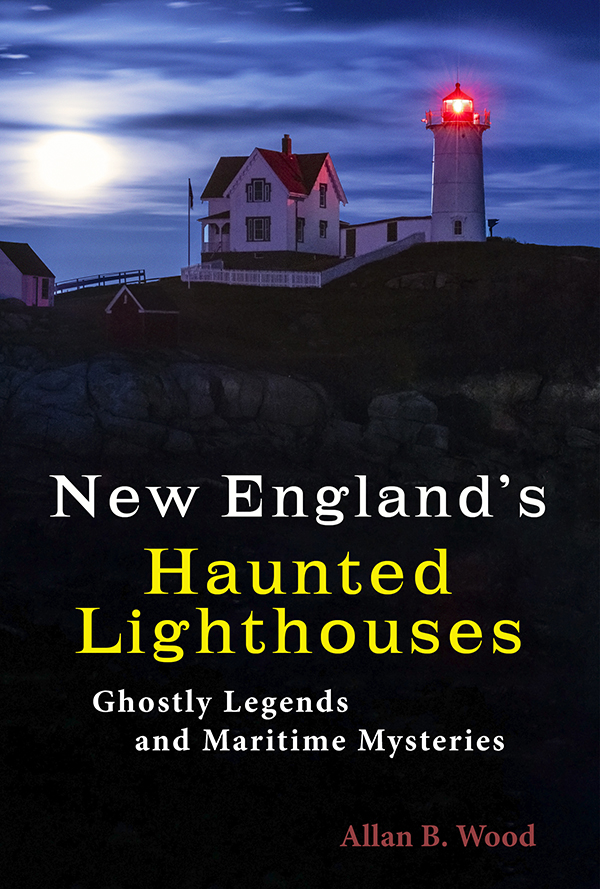
Available in paperback. |
In this image-rich book, discover the historical secrets surrounding the haunted lighthouses of New England! Respectable witnesses have reported numerous ghostly encounters, including the spirits of devoted keepers who refuse to leave, phantom ships, victims of misfortune, restless souls from nearby shipwrecks, and more. Immerse yourself in the stories connected to these iconic landmarks, blending maritime history with the paranormal. |
Lighthouses and Coastal Attractions of Southern New England: Connecticut, Rhode Island, and Massachusetts. Providing special stories from each of the 92 lighthouses on the southern New England coast, along with plenty of indoor and outdoor coastal attractions and tours you can explore. In the book you'll find local stories from all lighthouses in the Cape Cod region. For more info use my Lighthouse Books page. |
|
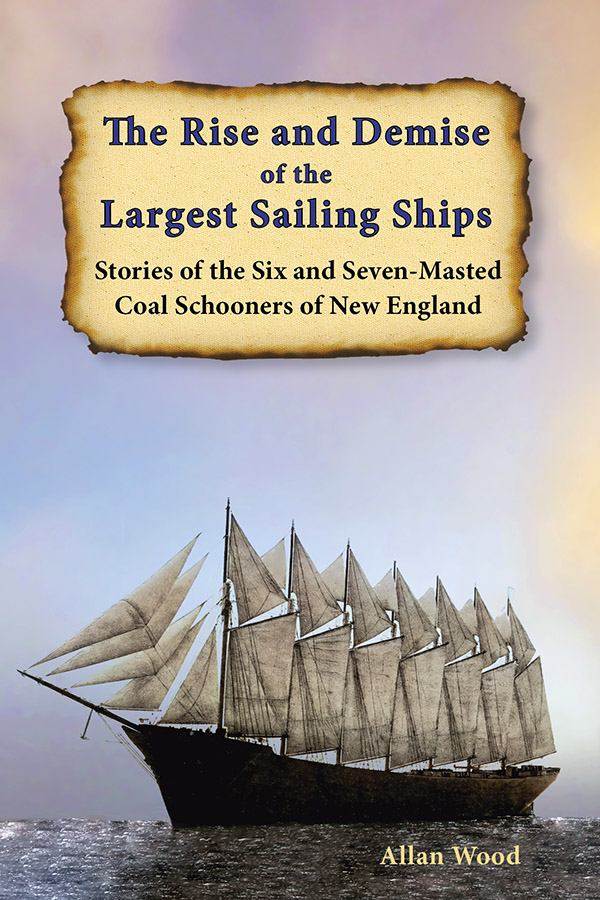 Available in paperback, hardcover, and as an eBook for all devices. |
The Rise and Demise of the Largest Sailing Ships: In the early 1900s, New England shipbuilders constructed the world’s largest sailing ships amid social and political reforms. These giants of sail were the ten original six-masted coal schooners and one colossal seven-masted vessel, built to carry massive quantities of coal and building supplies, and measured longer than a football field! This self-published book, balanced with plenty of color and vintage images, showcases the historical accounts that followed these mighty ships. In fact, many of these events occurred while sailing around the dangerous shoals of Cape Cod and the islands during stormy weather. |

